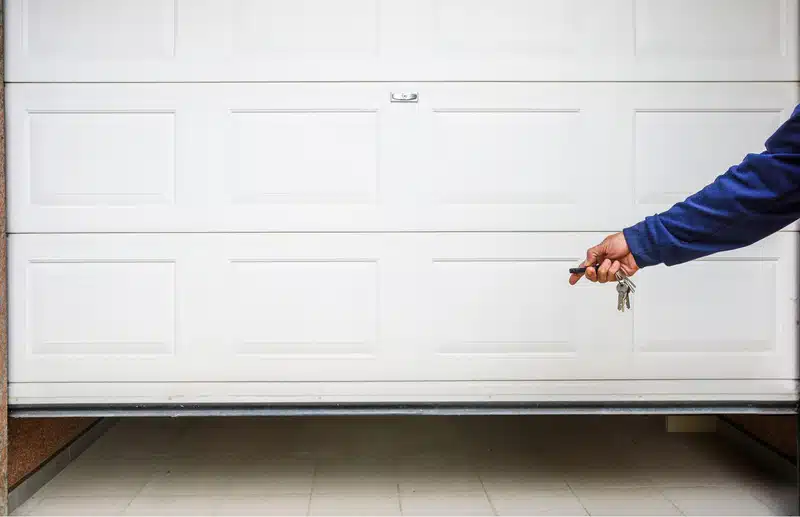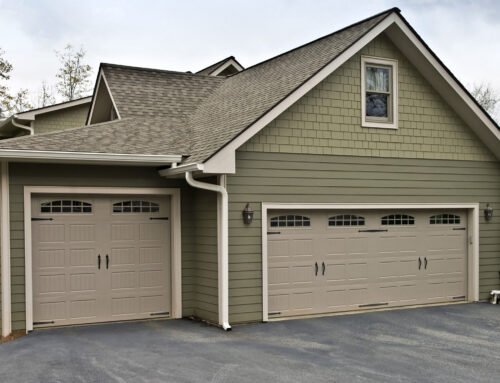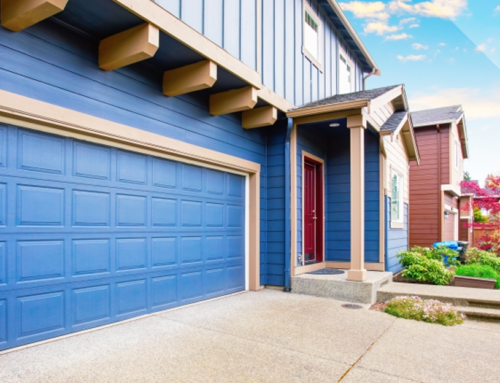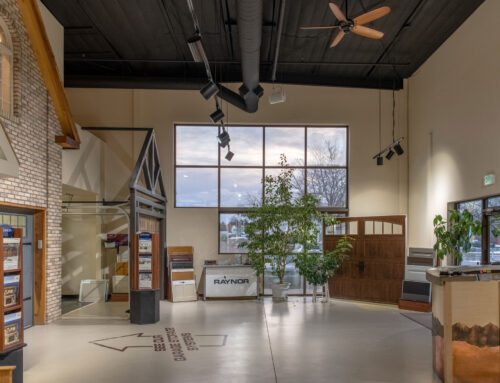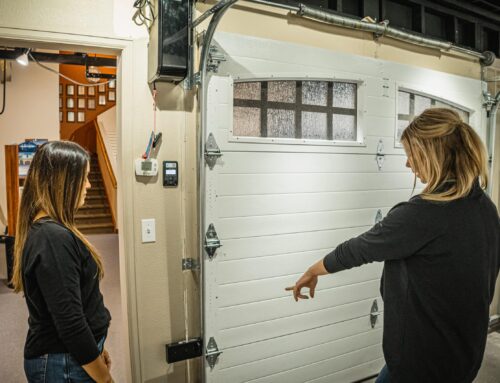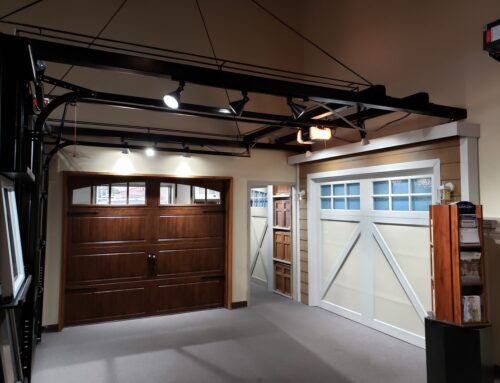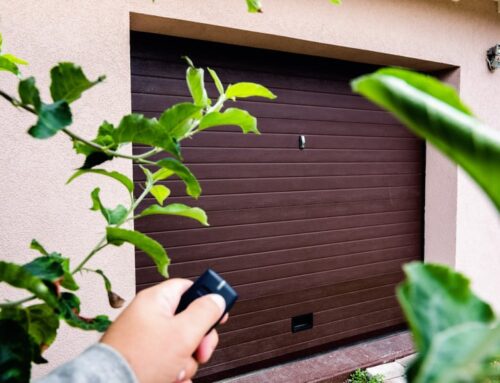Summer’s scorching heat can turn your garage into an unbearable furnace. This extreme temperature can damage your stored belongings and make working in the garage miserable. Fortunately, there are several effective strategies you can implement to keep your garage cooler in summer.
Minimizing Heat Gain in Your Garage
The first line of defense in keeping your garage cool involves preventing excessive heat from entering the space in the first place. Here are some key measures you can take:
Seal Air Leaks
Identify and seal any cracks or gaps around your garage door, windows, and other openings. These seemingly small leaks can allow hot outside air to infiltrate your garage and contribute significantly to rising temperatures.
- Pay close attention to the perimeter of your garage door, particularly around the sides and bottom. Gaps here can be especially problematic.
- Inspect windows and their frames for any cracks or loose fittings. These areas can also allow unwanted hot air to enter.
- Don’t forget to check the space between the foundation of your garage and the walls. Tiny gaps here can allow heat transfer, especially from hot pavement.
Insulate Your Garage Door
A traditional garage door acts as a large metal panel, offering little to no insulation. Installing an insulated garage door can significantly reduce heat transfer from outside during the summer and help maintain a comfortable temperature within your garage.
Garage doors come with varying insulation levels, measured in R-value. The higher the R-value, the greater the insulating power. Here’s a quick guide:
- Uninsulated garage doors: R-value of 0-1. These doors offer minimal insulation and are not recommended for keeping your garage cool in the summer.
- Single-layer insulated garage doors: R-value of 4-6. These doors provide some level of insulation but may not be sufficient for very hot climates.
- Double-layer insulated garage doors: R-value of 7-13. These doors offer a significant improvement in insulation and are a good choice for most climates.
- Triple-layer insulated garage doors: R-value of 14 and above. These doors provide the highest level of insulation and are ideal for extremely hot climates.
Block Direct Sunlight
Sunlight streaming through windows can significantly increase the temperature inside your garage. Here are ways to block direct sunlight and keep your garage cooler:
- Park your car outside if possible. This simple step can prevent your car’s hot interior from radiating heat into the garage.
- Consider installing window coverings such as awnings, shades, or reflective film on windows that receive direct sunlight. Awnings and shades physically block sunlight, while reflective film allows light to enter while reflecting heat radiation away from the garage.
Maximize Heat Release in Your Garage
Once you’ve addressed how heat enters your garage, it’s important to focus on ways to remove it and promote air circulation.
Improve Ventilation
Create cross-ventilation by opening doors and windows on opposite sides of your garage whenever possible. This allows hot air to escape and cooler outside air to enter, naturally lowering the garage temperature.
- Strategically position the openings for optimal airflow. For instance, open a higher window on one side of the garage and a lower door or window on the opposite side to create a strong air current.
- Pay attention to weather conditions. Extremely hot or humid days may make relying solely on natural ventilation less effective.
Install Fans
Installing strategically placed fans can significantly improve air circulation within your garage and help remove hot air.
- Wall-mounted fans are a good option for overall air circulation in your garage. Mount them strategically to create airflow patterns.
- High-velocity fans can provide concentrated cooling in specific areas of your garage, such as your workbench.
- Exhaust fans installed in the attic can help remove hot air that accumulates at the highest point of your garage.
Radiant Barrier
Consider installing a radiant barrier on the roof rafters of your garage. This reflective material helps deflect heat radiation from the sun, keeping your garage cooler. Radiant barriers are most effective in hot climates with high sun exposure.
Addressing Internal Heat Sources in Your Garage
In addition to managing external heat gain, you can also take steps to minimize heat generation within your garage:
- Limit using heat-generating appliances in your garage during the hottest parts of the day. This includes postponing tasks that involve power tools, machinery, or anything else that gives off heat.
- Upgrade to LED lighting in your garage. LED bulbs are much more energy-efficient than traditional incandescent bulbs and emit significantly less heat.
Keeping Your Garage Cool in Summer
By following the strategies outlined above, you can significantly reduce the temperature inside your garage and make it a more comfortable and usable space during the summer months.
Here are some additional tips to consider:
- Planting trees with strategically placed canopies can provide shade for your garage, further reducing heat gain. This is a long-term solution that can also enhance the aesthetics of your property.
- In very dry climates, using a swamp cooler can be an effective way to cool your garage. Swamp coolers work by using evaporation to lower air temperature and can be a good option for those who don’t want to invest in an air conditioning unit for their garage.
Maintaining a Cool Garage with the Right Garage Door
Your garage door plays a crucial role in keeping your garage cool in summer. If your current garage door is old, damaged, or poorly insulated, it may be contributing to rising temperatures inside your garage.
When considering upgrades to improve your garage’s summer comfort, consider these factors related to your garage door:
- Garage door insulation: As discussed earlier, installing a well-insulated garage door is one of the most effective ways to keep your garage cooler in summer. Find a garage door company that offers a variety of garage doors with different R-values to ensure optimal insulation for your climate.
- Garage door weatherstripping: Over time, weatherstripping around your garage door can become worn or damaged, allowing drafts of hot air to enter. Inspect your existing weatherstripping if necessary or find a company that specializes in garage door repair. Proper weatherstripping is essential for maintaining a cool and comfortable garage environment.
- Garage door with windows: While a garage door with windows can allow natural light into your workspace, it can also be a source of heat gain during the summer. If you decide to replace your garage door, consider a solid insulated model without windows for maximum heat control.
Front Range Raynor: Your Partner in Garage Comfort
If you’re looking to keep your garage cooler in summer and improve its overall functionality, Front Range Raynor can be your one-stop shop. Our team of experts can assess your needs and recommend the most suitable garage door solution, including installation and repairs of all parts and components, including garage door openers and weatherstripping.
They can advise on weatherstripping replacement and other garage door maintenance tasks to ensure optimal performance. For a free consultation and to explore your options for a cooler and more comfortable garage this summer, contact Front Range Raynor today!

